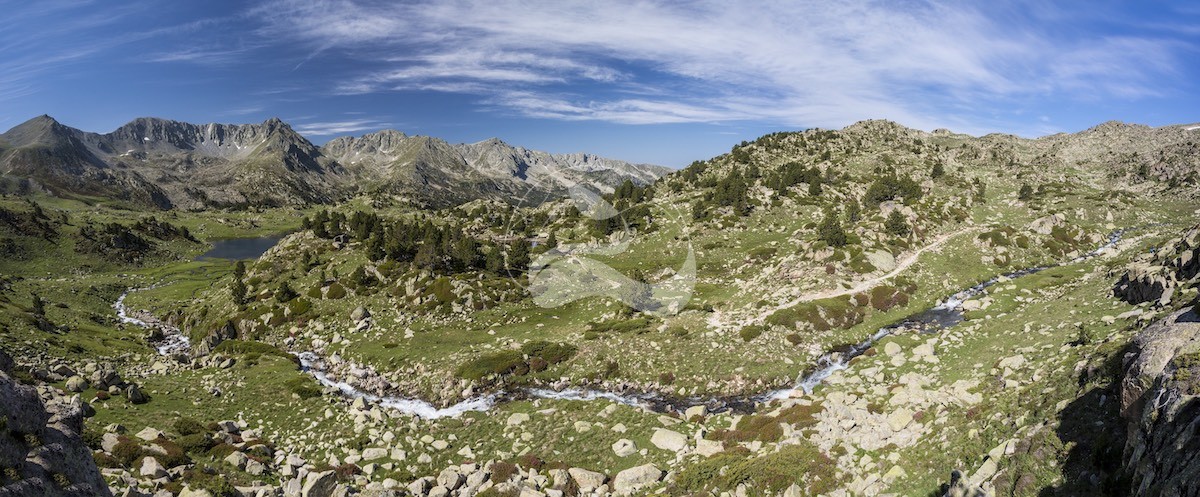
the nomination to world heritage site
The presentation of the candidacy to UNESCO¹’s World Heritage List is the exclusive prerogative of states that are part of the World Heritage Convention, signed by Andorra in 1996. The candidacy of the cultural landscape of the Madriu-Perafita-Claror Valley to the World Heritage List was a joint initiative by the Andorran government, and the Comuns [political, administrative and legal body of the Andorran parishes] of Encamp, Andorra la Vella, Sant Julià de Lòria and Escaldes-Engordany, of the Andorran National Committee for UNESCO (CNAU) and the Andorran National Committee for ICOMOS, with the participation of various agents with interests in the valley, as well as that of groups that use the area.
The idea arose from the Andorran National Committee for ICOMOS² and was initially submitted to the Ministry of Culture in 2001, and on 1st of July 2004, the World Heritage Committee, which met at its 28th session in Suzhou, China, approved the addition of the Madriu-Perafita-Claror Valley to the World Heritage List, in the category of cultural assets (cultural landscape). At present, there are only 121 cultural landscapes throughout the world.
The valley preserves many features and structures related to the exploitation, organisation and management of natural resources (forests, pastures, huts, paths, water, etc.) that show the use and evolution of this territory throughout its history. With its great identifying value, the valley has become a living testimony to the history and the lifestyles of a rural mountain country. Extraordinarily beautiful spots are the result of the interaction between man and the environment.
The Madriu-Perafita-Claror Valley is a cultural landscape, a “joint work of man and nature, that forms a coherent unit for its aesthetic, historic or cultural values” (Law 9/2003, on the cultural heritage of Andorra).
To be included in the World Heritage List a site must be of “exceptional universal value” and must meet at least one of the following selection criteria:
-
- “represents a masterpiece of human creative genius and cultural significance”
- “exhibits an important interchange of human values, over a span of time, or within a cultural area of the world, on developments in architecture or technology, monumental arts, town-planning, or landscape design”
- “to bear a unique or at least exceptional testimony to a cultural tradition or to a civilization which is living or which has disappeared”
- “is an outstanding example of a type of building, architectural, or technological ensemble or landscape which illustrates a significant stage in human history”
- “is an outstanding example of a traditional human settlement, land-use, or sea-use which is representative of a culture, or human interaction with the environment especially when it has become vulnerable under the impact of irreversible change”
- “is directly or tangibly associated with events or living traditions, with ideas, or with beliefs, with artistic and literary works of outstanding universal significance
- “contains superlative natural phenomena or areas of exceptional natural beauty and esthetic importance”
- “is an outstanding example representing major stages of Earth’s history, including the record of life, significant on-going geological processes in the development of landforms, or significant geomorphic or physiographic features”
- “is an outstanding example representing significant on-going ecological and biological processes in the evolution and development of terrestrial, fresh water, coastal and marine ecosystems, and communities of plants and animals”
- “contains the most important and significant natural habitats for in-situ conservation of biological diversity, including those containing threatened species of outstanding universal value from the point of view of science or conservation”
The valley was inscribed under criterion (v): “The Madriu-Perafita-Claror valley is a microcosm that provides a representative image of how its inhabitants have collected the scarce resources in the Pyrenees over the last millennia to create a sustainable living environment, in harmony with the mountain landscape. The Valley is reminiscent of an ancient communal land management system that has been in existence for over 700 years. ”
You can check the entire declaration of “Exceptional Universal Value” of the Madriu-Perafita-Claror valley here (French text):
¹ UNESCO is the United Nations Educational, Scientific and Cultural Organisation. Its main objective is to contribute to maintaining peace and security in the world through education, science, culture and communication and to promote collaboration between nations, to guarantee universal respect for justice, human rights and fundamental freedom. Acceptance on the World Heritage List establishes the exceptional universal value of a cultural or natural asset so that it can be protected for the benefit of humanity.
² ICOMOS (International Council on Monuments and Sites) is an international non-governmental organization associated with UNESCO. It is dedicated to the promotion of theory, methodology and technology applied to the conservation, protection and enhancement of cultural heritage. His works are based on the principles enshrined in the 1964 International Charter on the conservation and restoration of monuments and sites, called the Venice Charter.

